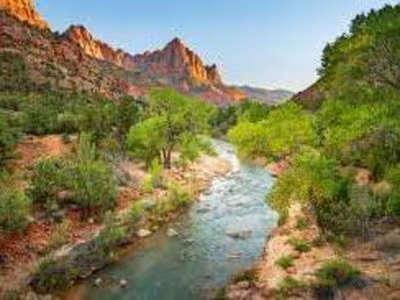SEO, AI, and Canva
Work order: TC000839
Primary Keyword: 10 U.S. National Parks road trip itineraries
Additional Keywords: National parks road trip, best national parks road trips, scenic park routes, national parks travel guide, road trip through national parks, U.S. park road trip tips, national parks driving routes, must-see parks on a road trip, road trip itinerary for national parks, national parks adventure, planning a parks road trip, national parks travel itinerary, cross-country parks road trip, national parks scenic drives, epic national parks road trip, national parks vacation plans, park-to-park road trip, road trip through America's parks, ultimate parks road trip guide, U.S. national parks road trip planner.
Meta Description: Discover the top 10 U.S. national parks road trip itineraries for an unforgettable adventure. Plan your journey now!
Explore 10 U.S. National Parks Road Trip Itineraries
Planning a road tour to discover the natural miracles of the United States is an exciting adventure that promises incredible landscapes, memorable experiences, and a deep
association with the environment. This blog post will guide you through “10 U.S. National Parks road trip itineraries” that showcase the best every park offers. Let's journey through some of America's most precious national gems, from the iconic Grand Canyon to the high sequoias of Sequoia and Kings Canyon.
Key Takeaways: Explore 10 U.S. National Parks Road Trip Itineraries to explore beautiful landscapes, varied wildlife, and unforgettable adventures. Plan your perfect nature getaway with our detailed guides and instructions for each park.
1. Grand Canyon National Park:
Must-See Spots
Your adventure begins at Grand Canyon National Park, a UNESCO World Heritage Site recognized for its vast size and breathtaking sights. This natural wonder, carved by the Colorado River for millions of years, extends 277 miles in length, up to 18 miles in width, and reaches a depth of over a mile. The Grand Canyon's steep scale and visually
incredible landscape of layered bands of red rock expose millions of years of geological history.
The South Rim, open year-round, is the most reachable part of the park and offers many spectacular viewpoints, making it a perfect starting point for first-time tourists. Here, you'll find some of the most iconic and attractive places in the Grand Canyon.
Best Viewpoints:
1. Mather Point:
Mather Point is one of the initial viewpoints you'll encounter when entering the South Rim. It is particularly famous for sunrise and sunset views, when the light improves the colors and shadows of the canyon walls, making a fascinating spectacle. Mather Point is simply accessible and provides a panoramic view that extends for miles, making it the best spot for photography and soft contemplation.
2. Yavapai Observation Station:
Situated a short distance from Mather Point, this viewpoint offers beautiful views and features an educational display of the Grand Canyon's geology. The observation station comprehensively explains the canyon's formation, complete with diagrams and fossil shows. This spot is ideal for those fascinated by learning more about the area's natural history while adoring beautiful views.
3. Desert View Watchtower:
Located at the eastern end of the South Rim, Desert View Watchtower offers some of the best expansive outlooks of the Grand Canyon and the Colorado River. The Watchtower, a 70-foot stone structure, is a reformation of a prehistoric Indian tower and deals with an exclusive vantage point. Inside, you can discover murals and artwork showing Native American history and culture, adding a cultural deepness to the visit.
4. The North Rim:
It is a less-packed option for those seeking a quieter experience. It is higher in altitude and offers different viewpoints and scenes. However, due to heavy snowfall throughout the winter months, it is only open from mid-May to mid-October.
Hiking Trails:
The Grand Canyon provides a range of hiking tracks that cater to all levels of trekkers, from casual walkers to experienced hikers.
Bright Angel Trail:
This track is one of the park's most widespread and well-maintained pathways. It descends profoundly into the canyon, proposing close-up visions of the geological formations. The track is challenging due to its sharp elevation changes, but the stunning views and sense of achievement are worth the effort. Water stations are accessible along the technique, and the track is shaded in various areas, making it somewhat more manageable.
South Kaibab Trail:
Recognized for its splendid vistas, it deals with crowds compared to the Bright Angel Trail. It is sharper and does not have water stations, so trekkers need to be well prepared. The sights along this track are unparalleled, with prominent sights like Ooh Aah Point and Skeleton Point delivering perfect photo chances.
Rim Trail:
The Rim Trail is an excellent choice for a more leisurely trek. This typically flat track follows the canyon's edge, offering continuous and unobstructed views of the Grand Canyon. It’s available for all ages and strength levels, making it best for families and those seeking a less strenuous technique to enjoy the landscape.
Recommended Activities:
Ranger-led Programs: These programs are an incredible way to learn about the park's natural and cultural antiquity. Rangers deliver insights into the canyon's geology, ecology, and history, making your visit more informative and charming.
Helicopter Tours:
Helicopter tours offer a distinctive perspective for a bird' s-eye canyon view. These visits provide a supreme view of the vast expanse and complicated details of the Grand Canyon, allowing you to appreciate its magnificence fully.
Mule Rides:
A distinctive way to discover the canyon below the rim is by using mule rides, a traditional and courageous way to see the canyon. These guided trips can take you down the canyon, delivering a different viewpoint and a memorable experience.
Grand Canyon National Park is a destination that captures the imagination and offers experiences that will stay with you forever. From its awe-inspiring views to its challenging trekking trails and exclusive activities, this park is a must-see on any road tour itinerary through the U.S. national parks.
2. Yellowstone National Park:
Geysers and Hot Springs
Yellowstone National Park, the first national park in the world, is famous for its geothermal topographies. One of the most famous landmarks is "Old Faithful," which erupts around every 90 minutes, spouting boiling water up to 185 feet into the air. This expectable geyser is a must-see and a sign of the park's geothermal activity. Moreover, don't miss the "Grand Prismatic Spring," the largest hot spring in the United States, recognized for its vibrant colors that span the range of the rainbow. Nearby, you'll discover bubbling mud vessels and fumaroles that add to the park's otherworldly site.
Wildlife Spotting:
Yellowstone is also the best destination for wildlife enthusiasts.
Lamar Valley:
This valley is frequently called the "Serengeti of North America," this zone is the best place to see wolves, bison, grizzly bears, and elk. Early mornings and late afternoons are the best times for seeing and observing wildlife.
Hayden Valley:
It is another excellent site for wildlife observation, particularly for seeing herds of bison, bears, and various birds. The valley's open lands make it easier to see animals.
Camping Options:
For those willing to involve themselves in nature, Yellowstone offers numerous camping choices:
Madison Campground:
It is centrally located, making it a picture-perfect base for exploring the park’s abundant attractions. It’s close to the geyser basins and the Madison River, making it perfect for fishing enthusiasts.
Canyon Campground:
It is located near the Grand Canyon of Yellowstone and offers easy access to spectacular waterfalls and picturesque viewpoints.
Scenic Drives:
Exploring Yellowstone by car is a beautiful experience.
Grand Loop Road:
This primary route takes you to all the essential sights, including geysers, waterfalls, and valleys. It's designed to find directions for the park’s different landscapes easily.
Beartooth Highway:
Known for its enormous mountain views, this lovely drive outside the park’s northeast entrance offers some of the most picturesque landscapes in the area, with elevated alpine scenery and panoramic scenes. Visit the More Than Just Parks for an extensive collection of stunning videos and detailed guides on US national parks.
3. Yosemite National Park (Famous
Landmarks):
Yosemite National Park introduces some of the world's most famous natural landmarks, fascinating millions of visitors yearly.
Half Dome:
● Iconic granite crest rising almost 5,000 feet above the valley ground. ● Popular among trekkers and climbers.
El Capitan:
● Prominent rock creation with a steep granite face spreading about 3,000 feet vertically.
● It is a top challenge for rock creepers worldwide.
Glacier Point:
● It offers magnificent panoramic views of Yosemite Valley, Half Dome, and the High Sierra.
● Perfect for tourists looking for stunning outlooks without climbing. Suggested Trails:
Yosemite features a widespread track network for all ability levels.
Mist Trail:
● Popular way leading to Vernal and Nevada Falls.
● Recognized for sharp granite staircases and foggy waterfall spray. ● Challenging and frightening.
Four Mile Trail:
● It provides outstanding views of Yosemite Falls, El Capitan, and the valley grounds.
● It is around five miles long, ascending above 3,200 feet.
● It offers supreme vistas as a lovely workout.
John Muir Trail:
● 211-mile expedition through the Sierra Nevada.
● It contains significant sections within Yosemite.
● Perfect for seasoned trekkers looking for an immersive experience. Camping Sites:
Yosemite proposes various camping choices that fit numerous preferences. Upper Pines Campground
● Centrally positioned in Yosemite Valley.
● Easy access to critical fascinations.
● Facilities: fire pits, picnic tables, and restrooms.
● Perfect for being in the heart of the action.
Tuolumne Meadows Campsite
● High-elevation retreat at 8,600 feet.
● It is a peaceful setting among subalpine meadows and granite domes. ● It proposes a relaxed camping experience.
● Both campgrounds provide distinctive techniques to enjoy Yosemite's natural attractiveness and serve as perfect origins for exploration.
4. Zion National Park (Popular Hiking Destinations)
➔ It is situated in southwestern Utah.
➔ It is recognized for its dramatic cliffs, thin canyons, and spectacular vistas. ➔ Popular among trekkers and outdoor enthusiasts.
The Narrows:
➔ The Narrows is an iconic trek through the Virgin River in a profound slot canyon. ➔ Towering walls, 20-30 feet apart, evoke a sense of wonder.
➔ Includes wading and occasionally swimming in the river.
➔ It needs preparation for changing water levels.
➔ It offers a fascinating journey with light and shadow interaction on canyon walls. Angels Landing:
➔ Known for active climbs and satisfying views.
➔ Angels Landing features a sharp ascent with thin ridges and necessary drop-offs. ➔ Chains are exposed in unprotected zones for safety.
➔ Summit provides a panoramic sight of Zion Canyon.
➔ The sense of achievement and outstanding scenery make it a highlight for tourists.
Other Activities:
Following are famous activities in Zion National Park are
Canyoneering:
➔ Well-known adventure sport in Zion.
➔ Includes rappelling, mountaineering, and swimming through slot canyons. ➔ It offers an exhilarating technique to discover Zion's rugged topography.
Zion Canyon Scenic Drive:
➔ It offers striking views of towering cliffs and green valleys.
➔ It contains many pullouts for photos, picnics, and charming views. ➔ The shuttle system works during the highest season to decrease traffic and provide easy access to main points.
Summary:
Zion National Park provides a wealth of activities for all explorers. Activities include hiking iconic tricks such as The Narrows and Angels Landing. Canyoneering offers an exciting way to explore slot canyons. Scenic drives provide relaxed ways to appreciate the park’s attractiveness.
Set against a remarkable natural landscape, Zion is a must-visit destination. Explore the best scenic trails in US National Parks and experience breathtaking views and unforgettable hikes!
5. Acadia National Park
➢ Acadia National Park is situated on the coast of Maine.
➢ The park offers rough and rocky landscapes and fabulous coastlines. ➢ Cadillac Mountain is the supreme point on the East Coast.
➢ Cadillac Mountain is the central place to view the sunrise.
➢ The coastline features dramatic cliffs and stony shores.
➢ Visitors can discover tide pools and explore marine life.
➢ Attractive drives along the coast offer incredible views.
➢ Coastal tracks provide chances for trekking and photography.
➢ Thunder Hole is a well-known spot where waves crash against the rocks.
Carriage Road System:
➢ The park’s transport roads are best for biking.
➢ John D. Rockefeller Jr constructed these roads.
➢ The roads provide a peaceful, car-free atmosphere.
➢ There are 45 miles of transport roads to travel and discover.
➢ Horseback riding is another technique that can be used to enjoy these historic roads.
➢ The roads are lined with lovely stone bridges and views.
➢ Carriage trips are accessible for a classic experience.
➢ The roads wind through forests, nearby lakes, and up mountains. ➢ The network is well-preserved and appropriate for all ages.
Bar Harbor:
➢ Bar Harbor is the amiable gateway to Acadia National Park.
➢ The town provides a diversity of local seafood restaurants.
➢ Lobster is a must-try when going to see Bar Harbor.
➢ There are numerous quaint shops to discover in town.
➢ Art galleries showcase local performers and their work.
➢ Bar Harbor has a rich history and attractive architecture.
➢ The town is a great place to relax after traveling to the park.
➢ Boat trips from Bar Harbor offer a different viewpoint of Acadia.
➢ Whale-watching visits are well-known and often successful.
➢ Bar Harbor has an energetic nightlife with local music and amusement.
Whether discovering the rough coastlines, biking the historic carriageways, or adoring the local charm of Bar Harbor, Acadia National Park provides something for everybody. Its natural attractiveness and cultural experiences make it a distinctive and unforgettable destination. Check out our ultimate US National Parks bucket list and plan your next memorable adventure!
6. Rocky Mountain National Park
Trail Ridge Road:
➢ Rocky Mountain National Park boasts Trail Ridge Road.
➢ Trail Ridge Road is the supreme continuous covered road in the U.S. ➢ The road provides spectacular views of the Rocky Mountains.
➢ It extends above 48 miles, crossing the Continental Divide.
➢ Altitudes on the road reach more than 12,000 feet.
➢ There are many overlooks and pullouts beside the way.
➢ Visitors can see panoramic outlooks of mountains, valleys, and tundra. ➢ The road is only open seasonally from late May to mid-October. ➢ Wildlife findings are common along Track Ridge Road.
➢ The road offers access to numerous hiking tracks and scenic parts. Wildlife Watching:
➢ Rocky Mountain National Park is a refuge for wildlife admirers.
➢ Elk are regularly seen grazing in the park's pastures.
➢ During the fall, elk bugling is a well-known attraction.
➢ Bighorn Sheep are usually spotted on stony outcrops.
➢ These animals are recognized for their remarkable horns and swiftness. ➢ Moose can be found close to the park's lakes and swamplands. ➢ Black bears and peak lions also occupy the park.
➢ Birdwatchers can appreciate spotting a diversity of bird species. ➢ Marmots and pikas are communal in the alpine tundra.
➢ Wildlife watching is best throughout early morning and late evening. Hiking Trails:
Rocky Mountain National Park offers an extensive range of hiking tracks. Bear Lake Trail:
➢ It is a short, beautiful hike appropriate for all ages.
➢ The track circles Bear Lake and offers spectacular views. Sky Pond Trail:
➢ It is more challenging, with a splendid alpine landscape. ➢ This track passes by waterfalls and alpine ponds.
Emerald Lake Trail:
➢ It is another well-known, moderate trek.
➢ The track leads to a stunning glacial lake.
Longs Peak Trail:
➢ It is for experienced trekkers looking for a challenge.
➢ This track clues to the park’s highest mountain at 14,259 feet. ➢ There are more than 355 miles of tracks to discover in the park.
Camping Sites:
Rocky Mountain National Park has numerous well-equipped campsites. Moraine Park Campground:
➢ It is centrally situated and readily available.
➢ It deals with modern amenities and splendid views.
Glacier Basin Campground:
➢ It offers attractive views and a peaceful setting.
➢ The campground is close to numerous well-known trails.
Aspenglen Campground:
➢ It is identified for its charming beauty and serenity.
Timber Creek Campground:
➢ It is found on the park’s west side.
➢ It deals with an additional remote camping experience.
➢ Reservations are recommended, particularly during peak season. ➢ Campsites offer an excellent base for discovering the park’s several fascinations.
Whether driving along the breathtaking Trail Ridge Road, viewing wildlife, trekking the diverse tracks, or camping in attractive campgrounds, Rocky Mountain National Park offers many activities and experiences for environment lovers and outdoor supporters.
For family-friendly national park road trip itineraries and engaging adventure videos, visit the Crazy Family Adventure.
7. Great Smoky Mountains National Park lies on the border between North Carolina and Tennessee.
Famous for biodiversity and attractive landscapes.
Cades Cove:
➔ Cades Cove is a picturesque valley with lavish meadows and mountain sights. ➔ Haven for wildlife supporters: black bears, white-tailed deer, and wild turkeys. ➔ It is an 11-mile ring road for easy drives or motorbike rides.
➔ Stops to discover historic constructions, churches, and the Cable Mill. Clingmans Dome:
➔ It is the Peak point in the Great Smoky Mountains (6,643 feet).
➔ Observation tower with a 360-degree sight of peaks and valleys. ➔ On clear days, visibility is up to 100 miles.
➔ Sharp half-mile walk to the tower.
Waterfalls:
The following are well-known waterfalls:
Laurel Falls:
➔ 80-foot waterfall.
➔ Accessible through a 2.6-mile round-trip trek (family-friendly). Grotto Falls:
➔ The track leads behind the waterfall.
➔ It is a 2.6-mile round-tour hike (moderately strenuous).
➔ The relaxed, hazy atmosphere behind the waterfalls.
Scenic Drives:
Newfound Gap Road:
➔ Crosses the park from Gatlinburg, TN, to Cherokee, NC.
➔ Traverses various ecosystems, from dense forests to high-altitude spruce-fir forests.
➔ Numerous overlooks with spectacular views.
Roaring Fork Motor Nature Trail:
➔ It is a one-way loop path (5.5 miles).
➔ It passes historic constructions, deep woodlands, and cascades. ➔ It offers a quiet and immersive experience of the park’s natural loveliness.
Summary:
Great Smoky Mountains National Park provides varied experiences for nature supporters, confirming an unforgettable visit. Uncover the best picnic spots in US National Parks and enjoy a meal surrounded by breathtaking scenery in our guide!
8. Arches National Park (Location and Overview):
● Arches National Park is situated in eastern Utah.
● It is recognized for its extraordinary natural stone arches.
● The park boasts more than 2,000 geological miracles.
● These arches were formed through eras of erosion and weathering. Iconic Formations:
Delicate Arch:
● One of the most well-known formations is the Delicate Arch.
● Delicate Arch is a freestanding arch and an iconic mark of Utah. ● It is 46 feet high and 32 feet wide.
● It is primarily gorgeous at sunset.
● The setting sun brightens the red and orange kinds of the rock.
● It makes a breathtaking sight for photographers and tourists.
Landscape Arch:
● Landscape Arch is regarded as one of the most extended natural arches in the world.
● It extends an impressive 290 feet.
● This arch is reachable through the Devil's Garden Trail.
● The track also leads to formations like Tunnel Arch and Pine Tree Arch. Photography Opportunities
● Arches National Park offers numerous prime places for photography devotees. ● Delicate Arch is best photographed in the afternoon at sunset. ● The Windows Section includes the Turret Arch and the North and South Windows.
● These places provide excellent photo chances.
● Early morning hours propose the best light for photography.
● The distinctive shapes and sizes of these arches compared to the La Sal Mountains make for remarkable compositions
Hiking Experiences:
● Hiking in Arches National Park is a pleasing and satisfying experience. ● Tracks range from easy walks to more stimulating treks.
● The Devil's Garden Trail is a well-liked choice.
● The Double Arch Trail is another desired.
Camping Adventures:
● Camping in Arches National Park is an exclusive technique that allows you to experience its attractiveness.
● The Devil's Garden Campground is the only campsite inside the park. ● It offers 50 campgrounds.
● Staying here lets visitors love the park's serenity and star-filled skies. ● It creates a memorable outdoor adventure.
Summary:
Arches National Park is a treasure trove of natural miracles. It is perfect for trekkers, photographers, and nature supporters. The park's iconic arch creations and picturesque sites ensure an outstanding visit. Excellent camping services are available here to further enhance the experience. Discover the best kid-friendly activities in US National Parks for a fun and educational family adventure!
9. Glacier National Park (Overview):
Glacier National Park is found in the Rocky Mountains of Montana. It is famous for its gorgeous landscapes and varied ecosystems.
Going-to-the-Sun Road:
➔ One of the best iconic experiences in the park is driving beside the Going-to-the-Sun Road.
➔ This 50-mile road extension navigates the park, overlapping the Continental Divide at Logan Pass.
➔ It offers beautiful views of rough mountains, cascading waterfalls, and glacial valleys.
➔ The engineering wonder of this road offers access to some of the park’s most beautiful and remote zones.
Lake McDonald:
➔ Lake McDonald is the biggest lake in Glacier National Park.
➔ It is a core for water activities like kayaking and boating.
➔ Its crystal-pure waters reflect the nearby mountains.
➔ It creates scenes that are best for photography and recreation.
➔ The peaceful environment of Lake McDonald makes it a perfect spot for both adventure and serenity.
Grinnell Glacier Hike:
➔ For those looking for a more challenging adventure, the trek to Grinnell Glacier is a must-do.
➔ This strenuous track spans about 11 miles round-trip.
➔ It offers trekkers splendid views of alpine meadows, pristine lakes, and the inspiring Grinnell Glacier.
Wildlife Enthusiasts:
➔ Wildlife lovers will find Glacier National Park to be a heaven.
➔ Mountain goats are commonly seen near Logan Pass, grazing along the sharp slopes.
➔ Grizzly bears also populate the park.
➔ Sightings can be exciting, but tourists must keep a safe distance. ➔ Visitors should follow all park rules and strategies to ensure safety.
10. Sequoia and Kings Canyon National Parks:
➢ Sequoia and Kings Canyon National Parks in California are famous for their vast sequoia trees, some of Earth's most prominent and oldest living creatures. ➢ The General Sherman Tree, the most giant tree on Earth by volume, stands above 275 feet tall and is about 2,200 years old. It showcases the grandeur of the environment.
Moro Rock:
Moro Rock, a granite dome in Sequoia National Park, offers panoramic views after a sharp stairway hike. Hikers can enjoy incredible vistas of nearby mountains and forests.
Generals Highway:
The Generals Highway links Sequoia and Kings Canyon, a stunning drive through diverse landscapes with groves of vast sequoias, valleys, and stony mountains. This drive offers numerous chances for exploring and photography.
Crystal Cave:
The parks also feature Crystal Cave, a stunning marble cavern that can be explored through guided tours. For detailed national park itineraries, including tips and best routes, visit the National Park Itinerary - Earth Trekkers.
Conclusion:�
These “10 U.S. National Parks road trip itineraries” offer diverse experiences, from the deserts of the Southwest to the rough coastlines of the Northeast. Whether you're a passionate hiker, wildlife supporter, or simply looking to adore some of the most attractive landscapes in the world, these itineraries will help you make the most of your national park ventures. Have you visited any of these parks or have advice to share? Leave a comment below and join the conversation!
Frequently Asked Questions:
1. How many days should I spend in each national park?
The number of days you should spend in every national park depends on many factors, including the activities you plan to do, the size and difficulty of the park, and your personal preferences. Here are some general rules:
Parks You Can Visit in 1 Day:
● Black Canyon of the Gunnison National Park
● Carlsbad Caverns National Park ● Congaree National Park
● Gateway Arch National Park
● Great Sand Dunes National Park ● Hot Springs National Park
● Indiana Dunes National Park
● Joshua Tree National Park
● Mammoth Cave National Park ● Mesa Verde National Park
● Petrified Forest National Park ● Pinnacles National Park
● White Sands National Park
Parks You Can Visit in 1 to 2 Days:
● Arches National Park
● Biscayne National Park
● Bryce Canyon National Park
● Canyonlands National Park
● Capitol Reef National Park
● Channel Islands National Park ● Cuyahoga Valley National Park ● Death Valley National Park
● Dry Tortugas National Park
● Everglades National Park
● Great Basin National Park
● Guadalupe Mountains National Park ● Hawai'i Volcanoes National Park ● Kenai Fjords National Park
● Kings Canyon National Park
● New River Gorge National Park ● Saguaro National Park
● Sequoia National Park
● Shenandoah National Park
● Theodore Roosevelt National Park ● Virgin Islands National Park
● Voyageurs National Park
Parks You Can Visit in 2 to 4 Days: ● Acadia National Park
● Denali National Park
● Glacier Bay National Park
● Grand Canyon National Park
● Grand Teton National Park
● Great Smoky Mountains National Park
● Haleakala National Park
● Yosemite National Park
Parks That Require More Than 4 Days:
Some parks, like Isle Royale National Park, require more than four days to experience due to their remote sites and limited accessibility.
The number of days you should spend in every national park depends on your plans and preferences. Researching the park and planning your visit is fundamental to maximizing your time.
2. How to plan a national park road trip?
Planning a national park road trip in the United States needs thorough consideration of many factors, including the time of year, the parks you wish to visit, transportation, and accommodations. Here are some primary steps to help you plan your journey:
● Select your parks
● Plan your time
● Get to the parks
● Plan your journey
● Use maps and guides
● Prepare for your tour
Following these steps, you can plan a successful and pleasurable national park road trip in the USA.
3. What is the best way to see all the national parks?
The best method to see all the national parks in the United States is by planning a road tour. It allows for elasticity and discovering multiple parks in a single tour. Here are some guidelines and routes to consider:
● Plan ahead
● Choose a route
● Consider RVing
● Purchase an annual pass
● Research and plan
● Recreate sensibly
● Book early
By following these tips and planning your trip carefully, you can have an unforgettable and pleasurable experience visiting all the national parks in the United States.
4. What are 15 Bucket List National Park Road Trips In The US?
● South Dakota’s Black Hills to Yellowstone Road Trip
● Lake Powell and Antelope Canyon
● Big Bend, Guadalupe Mountains, and Carlsbad Caverns
● West Virginia’s Wonders
● Florida Keys
● New Mexico to Texas
● Bryce to Moab via Goblin Valley
● Cruise through the American Southwest desert on this memorable trip ● Colorado → Wind Cave National Park
● Washington National Park Road Trip
● Badlands National Park, South Dakota
● Lassen Volcanic National Park: California National Parks Road Trip ● Olympic, North Cascades, and Mount Rainier National Parks
● Crater Lake National Park
● Arizona National Park Road Trips With Scenic Stops
Like this project
Posted Oct 28, 2024
My role. Writer, Editor, and Designer Project description. I have created a variety of articles using SEO strategies, AI tools, and Canva.
Likes
0
Views
1





